Moonlit Roads—Spatial and Temporal Patterns of Wildlife–Vehicle Collisions in Serbia
Abstract
1. Introduction
2. Literature Review
3. Research Methodology
- We conducted a comparative analysis of the total number of WVCs during the several lunar phases: the new moon, first quarter, third quarter, and full moon. Information on the lunar phases, along with moonrise and moonset times, was obtained from Meteogram [40]. The first study hypothesis (H1) posits that a statistically significant difference exists in the number of WVCs observed during the full moon in comparison to the other three studied periods (nights).
- We conducted a comparative analysis of the yearly average number of WVCs during the full moon and the yearly average number of WVCs during the other days, except for the days of the new moon, first quarter, and third quarter (since these were analyzed through H1). In this way, a small modification of the control groups presented in [41] was made. The goal of this comparison was to determine whether there was a difference in the number of WVCs during the full moon compared to any other period that did not include the previously mentioned specific nights (the second hypothesis (H2)). This covered all the remaining moon phases not analyzed by H1.
- As an exploratory addition to the main analysis, we examined whether the continuous variables—the percentage of visible moon surface and the duration of daylight—were associated with the number of WVCs. The rationale for this was to test whether gradual changes in the lunar illumination or photoperiod might have influence the collision patterns beyond the categorical moon phase groupings used in the core analysis (the third hypothesis (H3)).
Statistical Assumptions and Model Diagnostics
4. Results
4.1. General Characteristics of the Data
4.2. Testing Hypothesis 1 (H1)
4.3. Testing Hypothesis 2 (H2)
4.4. Testing Hypothesis 3 (H3)
5. Discussion
- Overlaying WVC spatial hotspots with forest coverage and road curvature to identify likely animal-crossing points for targeted signage installation (as a priority action).
- The installation of static animal-warning signs on rural roads (curves) and forest-edge segments within districts at elevated risk (e.g., South Bačka, Podunavlje), using frequency maps from this study to prioritize locations.
- The deployment of VMS panels on roads with recorded nighttime WVC clusters to deliver dynamic messages during full moon phases (±1 day) or migration periods, especially in autumn and spring.
- Encouraging pilot projects in the most affected districts that would test different signage types and measure their effectiveness at reducing WVCs.
- Establishing a feedback loop between police crash records and signage effectiveness studies to optimize future interventions.
6. Conclusions
Author Contributions
Funding
Institutional Review Board Statement
Data Availability Statement
Conflicts of Interest
References
- World Health Organization (WHO) Road Traffic Injuries. Available online: https://www.who.int/news-room/fact-sheets/detail/road-traffic-injuries (accessed on 15 April 2025).
- Skroch, M.; Hilaire, T. Wildlife-Vehicle Collisions Are a Big and Costly Problem and Congress Can Help. Available online: https://www.pewtrusts.org/en/research-and-analysis/articles/2021/05/10/wildlife-vehicle-collisions-are-a-big-and-costly-problem-and-congress-can-help (accessed on 16 April 2025).
- Creech, T.G.; Fairbank, E.R.; Clevenger, A.P.; Callahan, A.R.; Ament, R.J. Differences in Spatiotemporal Patterns of Vehicle Collisions with Wildlife and Livestock. Environ. Manag. 2019, 64, 736–745. [Google Scholar] [CrossRef] [PubMed]
- Akrim, F.; Mahmood, T.; Andleeb, S.; Hussain, R.; Collinson, W.J. Spatiotemporal Patterns of Wildlife Road Mortality in the Pothwar Plateau, Pakistan. Mammalia 2019, 83, 487–495. [Google Scholar] [CrossRef]
- Arevalo, J.E.; Honda, W.; Arce-Arias, A.; Häger, A. Spatio-Temporal Variation of Roadkills Show Mass Mortality Events for Amphibians in a Highly Trafficked Road Adjacent to a National Park, Costa Rica. Rev. Biol. Trop. 2017, 65, 1261. [Google Scholar] [CrossRef]
- Wilkins, D.C.; Kockelman, K.M.; Jiang, N. Animal-Vehicle Collisions in Texas: How to Protect Travelers and Animals on Roadways. Accid. Anal. Prev. 2019, 131, 157–170. [Google Scholar] [CrossRef]
- Templer, D.I.; Veleber, D.M.; Brooner, R.K. Geophysical Variables and Behavior: VI. Lunar Phase and Accident Injuries: A Difference between Night and Day. Percept. Mot. Skills 1982, 55, 280–282. [Google Scholar] [CrossRef]
- Steiner, W.; Scholl, E.M.; Leisch, F.; Hacklander, K. Temporal Patterns of Roe Deer Traffic Accidents: Effects of Season, Daytime and Lunar Phase. PLoS ONE 2021, 16, 16–19. [Google Scholar] [CrossRef] [PubMed]
- Colino-Rabanal, V.J.; Langen, T.A.; Peris, S.J.; Lizana, M. Ungulate: Vehicle Collision Rates Are Associated with the Phase of the Moon. Biodivers. Conserv. 2018, 27, 681–694. [Google Scholar] [CrossRef]
- Sitar, J. K Semilunárnímu Zvýsení Dopravní Nehodovosti [The Effect of the Semilunar Phase on an Increase in Traffic Accidents]. Cas Lek Ces. 1994, 133, 596–598. [Google Scholar]
- Onozuka, D.; Nishimura, K.; Hagihara, A. Full Moon and Traffic Accident-Related Emergency Ambulance Transport: A Nationwide Case-Crossover Study. Sci. Total Environ. 2018, 644, 801–805. [Google Scholar] [CrossRef]
- World Health Organization (WHO) Road Traffic Mortality. Available online: https://www.who.int/data/gho/data/themes/topics/topic-details/GHO/road-traffic-mortality#:~:text=Road%20traffic%20injuries%20are%20currently,traffic%20injuries%20can%20be%20prevented (accessed on 26 May 2025).
- Lipovac, K. Bezbednost Saobraćaja [Road Traffic Safety]; Public enterprise Official Gazette of the Republic of Serbia: Belgrade, Serbia, 2008; ISBN 978-86-355-0747-7. [Google Scholar]
- Becker, N.; Rust, H.; Ulbrich, U. Weather Impacts on Various Types of Road Crashes: A Quantitative Analysis Using Generalized Additive Models. Eur. Transp. Res. Rev. 2022, 14, 37. [Google Scholar] [CrossRef]
- Das, S.; Bura, S.; Hossain, A. Unraveling the Complex Relationship between Weather Conditions and Traffic Safety. J. Transp. Saf. Secur. 2024, 17, 572–611. [Google Scholar] [CrossRef]
- Murphy, F.M. Car Accidents & Animals: What You Need to Know. Available online: https://www.murphyfalcon.com/news/car-accidents-animals-what-you-need-to-know/ (accessed on 28 May 2025).
- Jakubas, D.; Ryś, M.; Lazarus, M. Factors Affecting Wildlife-Vehicle Collision on the Expressway in a Suburban Area in Northern Poland. North. West. J. Zool. 2018, 14, 107–116. [Google Scholar]
- Su, H.; Wang, Y.; Yang, Y.; Tao, S.; Kong, Y. An Analytical Framework of the Factors Affecting Wildlife–Vehicle Collisions and Barriers to Movement. Sustainability 2023, 15, 11181. [Google Scholar] [CrossRef]
- Llagostera, P.; Comas, C.; López, N. Modeling Road Traffic Safety Based on Point Patterns of Wildlife-Vehicle Collisions. Sci. Total Environ. 2022, 846, 157237. [Google Scholar] [CrossRef]
- Sullivan, J.M. Trends and Characteristics of Animal-Vehicle Collisions in the United States. J. Saf. Res. 2011, 42, 9–16. [Google Scholar] [CrossRef]
- Laliberté, J.; St-Laurent, M.H. In the Wrong Place at the Wrong Time: Moose and Deer Movement Patterns Influence Wildlife-Vehicle Collision Risk. Accid. Anal. Prev. 2020, 135, 105365. [Google Scholar] [CrossRef] [PubMed]
- Kučas, A.; Balčiauskas, L. Impact of Road Fencing on Ungulate–Vehicle Collisions and Hotspot Patterns. Land 2021, 10, 338. [Google Scholar] [CrossRef]
- Keken, Z.; Sedoník, J.; Kušta, T.; Andrášik, R.; Bíl, M. Roadside Vegetation Influences Clustering of Ungulate Vehicle Collisions. Transp. Res. Part D Transp. Environ. 2019, 73, 381–390. [Google Scholar] [CrossRef]
- Bénard, A. Road Ecology: Toward a Predictive Model of Wildlife-Vehicle Collisions. Ph.D. Thesis, Université Claude Bernard Lyon, Villeurbanne, France, 2023. [Google Scholar]
- Pagany, R. Wildlife-Vehicle Collisions—Influencing Factors, Data Collection and Research Methods. Biol. Conserv. 2020, 251, 108758. [Google Scholar] [CrossRef]
- Laverty, W.H.; Kelly, I.W.; Flynn, M.; Rotton, J. Geophysical Variables and Behavior: LXVIII. Distal and Lunar Variables and Traffic Accidents in Saskatchewan 1984 to 1989. Percept. Mot. Skills 1992, 74, 483–488. [Google Scholar] [CrossRef]
- Cerri, J.; Stendardi, L.; Bužan, E.; Pokorny, B. Accounting for Cloud Cover and Circannual Variation Puts the Effect of Lunar Phase on Deer–Vehicle Collisions into Perspective. J. Appl. Ecol. 2023, 60, 1698–1707. [Google Scholar] [CrossRef]
- Vrkljan, J.; Hozjan, D.; Barić, D.; Ugarković, D.; Krapinec, K. Temporal Patterns of Vehicle Collisions with Roe Deer and Wild Boar in the Dinaric Area. Croat. J. For. Eng. 2017, 41, 13. [Google Scholar] [CrossRef]
- Bil, M.; Andrášik, R.; Bilova, M. Wildlife-Vehicle Collisions: The Disproportionate Risk of Injury Faced by Motorcyclists. Injury 2024, 55, 111301. [Google Scholar] [CrossRef] [PubMed]
- Balčiauskas, L.; Kučas, A.; Balčiauskienė, L. A Review of Wildlife–Vehicle Collisions: A Multidisciplinary Path to Sustainable Transportation and Wildlife Protection. Sustainability 2025, 17, 4644. [Google Scholar] [CrossRef]
- Zou, Y.; Zhong, X.; Tang, J.; Ye, X.; Wu, L.; Ijaz, M.; Wang, Y. A Copula-Based Approach for Accommodating the Underreporting Effect in Wildlife-Vehicle Crash Analysis. Sustainability 2019, 11, 418. [Google Scholar] [CrossRef]
- Martolos, J.; Šikula, T.; Libosvár, T.; Anděl, P. Optimization of Measures to Prevent Collisions of Animals and Road Traffic. Trans. Transp. Sci. 2014, 7, 125–134. [Google Scholar] [CrossRef]
- Akopov, A.S.; Beklaryan, L.A. Simulation of Rates of Traffic Accidents Involving Unmanned Ground Vehicles within a Transportation System for the “Smart City. ” Bus. Inform. 2022, 16, 19–35. [Google Scholar] [CrossRef]
- García-Martínez-de-albéniz, Í.; Ruiz-De-villa, J.A.; Rodriguez-Hernandez, J. Impact of COVID-19 Lockdown on Wildlife–Vehicle Collisions in NW of Spain. Sustainability 2022, 14, 4849. [Google Scholar] [CrossRef]
- Iio, K.; Lord, D. Does Wildlife-Vehicle Collision Frequency Increase on Full Moon Nights? A Case-Crossover Analysis. Transp. Res. Part D Transp. Environ. 2024, 135, 104386. [Google Scholar] [CrossRef]
- Chen, S.; Cheng, K.; Yang, J.; Zang, X.; Luo, Q.; Li, J. Driving Behavior Risk Measurement and Cluster Analysis Driven by Vehicle Trajectory Data. Appl. Sci. 2023, 13, 5675. [Google Scholar] [CrossRef]
- Chen, S.; Piao, L.; Zang, X.; Luo, Q.; Li, J.; Yang, J.; Rong, J. Analyzing Differences of Highway Lane-Changing Behavior Using Vehicle Trajectory Data. Phys. A Stat. Mech. Its Appl. 2023, 624, 128980. [Google Scholar] [CrossRef]
- Ministry of Internal Affairs of the Republic of Serbia. Data on Traffic Accidents by Police Departments and Municipalities. Available online: https://data.gov.rs/sr/datasets/podatsi-o-saobratshajnim-nezgodama-po-politsijskim-upravama-i-opshtinama/ (accessed on 15 May 2025).
- Statistical Office of the Republic of Serbia Administrative Categorization of the Republic of Serbia. Available online: https://www.stat.gov.rs/en-US/oblasti/registar-prostornih-jedinica-i-gis/administrativno-teritorijalna-podela-i-nstj-nivoi-1-2-3/nstj-3 (accessed on 18 May 2025).
- Meteogram Moon Phase and Times of Moonrise and Moonset. Available online: https://meteogram.org/moon/serbia/belgrade/ (accessed on 15 May 2025).
- Redelmeier, D.A.; Shafir, E. The Full Moon and Motorcycle Related Mortality: Population Based Double Control Study. BMJ 2017, 359, j5367. [Google Scholar] [CrossRef] [PubMed]
- Parmar, V.S.; Talikowska-Szymczak, E.; Downs, E.; Szymczak, P.; Meiklejohn, E.; Groll, D. Effects of Full-Moon Definition on Psychiatric Emergency Department Presentations. ISRN Emerg. Med. 2014, 2014, 1–6. [Google Scholar] [CrossRef][Green Version]
- Todd, J.J.; Barakat, B.; Tavassoli, A.; Krauss, D.A. The Moon’s Contribution to Nighttime Illuminance in Different Environments. Proc. Hum. Factors Ergon. Soc. 2015, 59, 1056–1060. [Google Scholar] [CrossRef]
- Roy, A.; Biswas, T.; Roy, A.K. A Structured Review of Relation between Full Moon and Different Aspects of Human Health. SM J. Biometr. Biostat. 2017, 2, 1007. [Google Scholar] [CrossRef]
- Téllez, A.; García, C.H.; Corral-Verdugo, V. Effect Size, Confidence Intervals and Statistical Power in Psychological Research. Psychol. Russ. State Art 2015, 8, 27–47. [Google Scholar] [CrossRef]
- Ha, H.; Shilling, F. Modelling Potential Wildlife-Vehicle Collisions (WVC) Locations Using Environmental Factors and Human Population Density: A Case-Study from 3 State Highways in Central California. Ecol. Inform. 2018, 43, 212–221. [Google Scholar] [CrossRef]
- Lykov, S.; Asakura, Y. Tensor Robust Principal Component Analysis with Continuum Modeling of Traffic Flow: Application to Abnormal Traffic Pattern Extraction in Large Transportation Networks. Transp. Res. Procedia 2018, 34, 187–194. [Google Scholar] [CrossRef]
- Saha, P.; Roy, N.; Mukherjee, D.; Sarkar, A.K. Application of Principal Component Analysis for Outlier Detection in Heterogeneous Traffic Data. Procedia Comput. Sci. 2016, 83, 107–114. [Google Scholar] [CrossRef]
- Statistical Office of the Republic of Serbia. Municipalities and Regions in the Republic of Serbia; Statistical Office of the Republic of Serbia: Belgrade, Serbia, 2024; ISSN 1450-9075.
- Ignatavičius, G.; Ulevičius, A.; Valskys, V.; Galinskaitė, L.; Busher, P.E.; Trakimas, G. Lunar Phases and Wildlife–Vehicle Collisions: Application of the Lunar Disk Percentage Method. Animals 2021, 11, 908. [Google Scholar] [CrossRef]
- Ji, Y.; Huang, Y.; Yang, M.; Leng, H.; Ren, L.; Liu, H.; Chen, Y. Physics-Informed Deep Learning for Virtual Rail Train Trajectory Following Control. Reliab. Eng. Syst. Saf. 2025, 261, 111092. [Google Scholar] [CrossRef]
- Chen, Y.; Liu, X.; Rao, M.; Qin, Y.; Wang, Z.; Ji, Y. Explicit Speed-Integrated LSTM Network for Non-Stationary Gearbox Vibration Representation and Fault Detection under Varying Speed Conditions. Reliab. Eng. Syst. Saf. 2025, 254, 110596. [Google Scholar] [CrossRef]
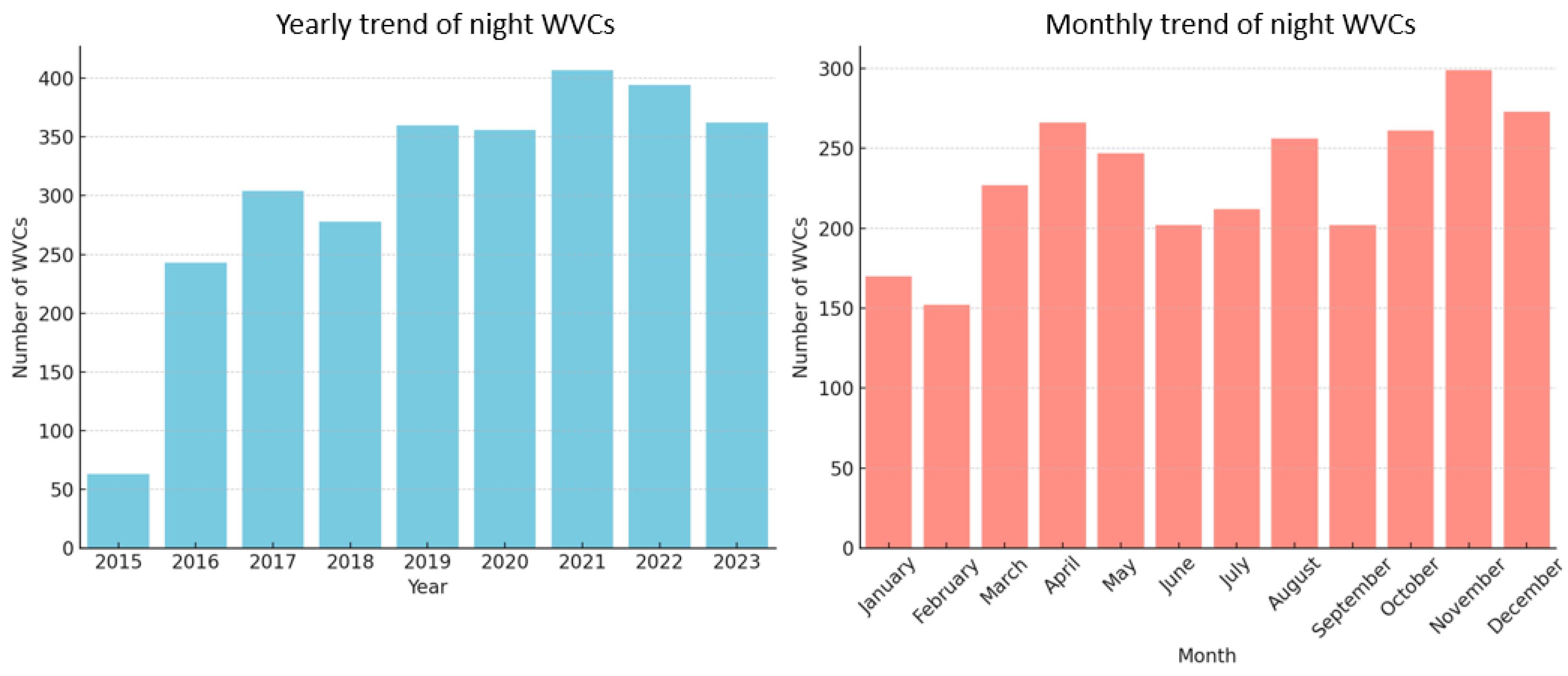
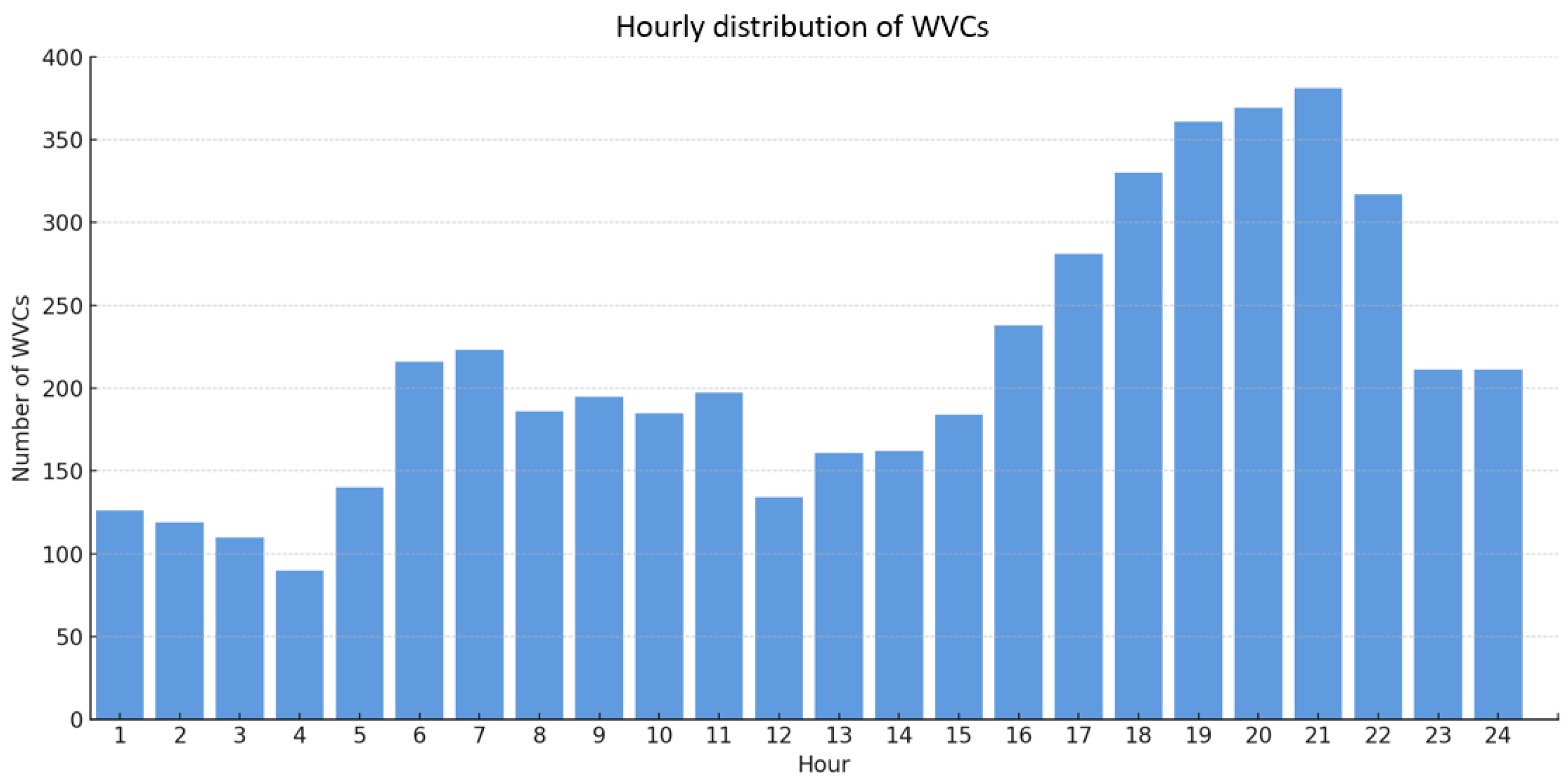
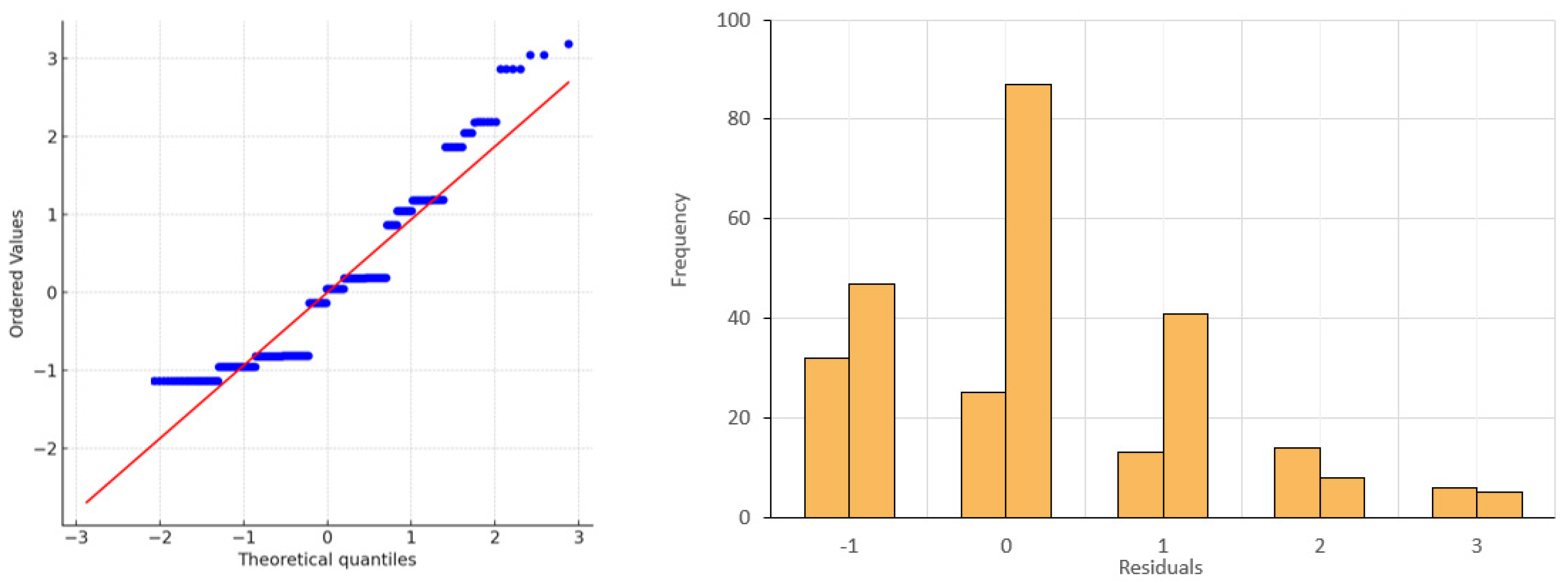
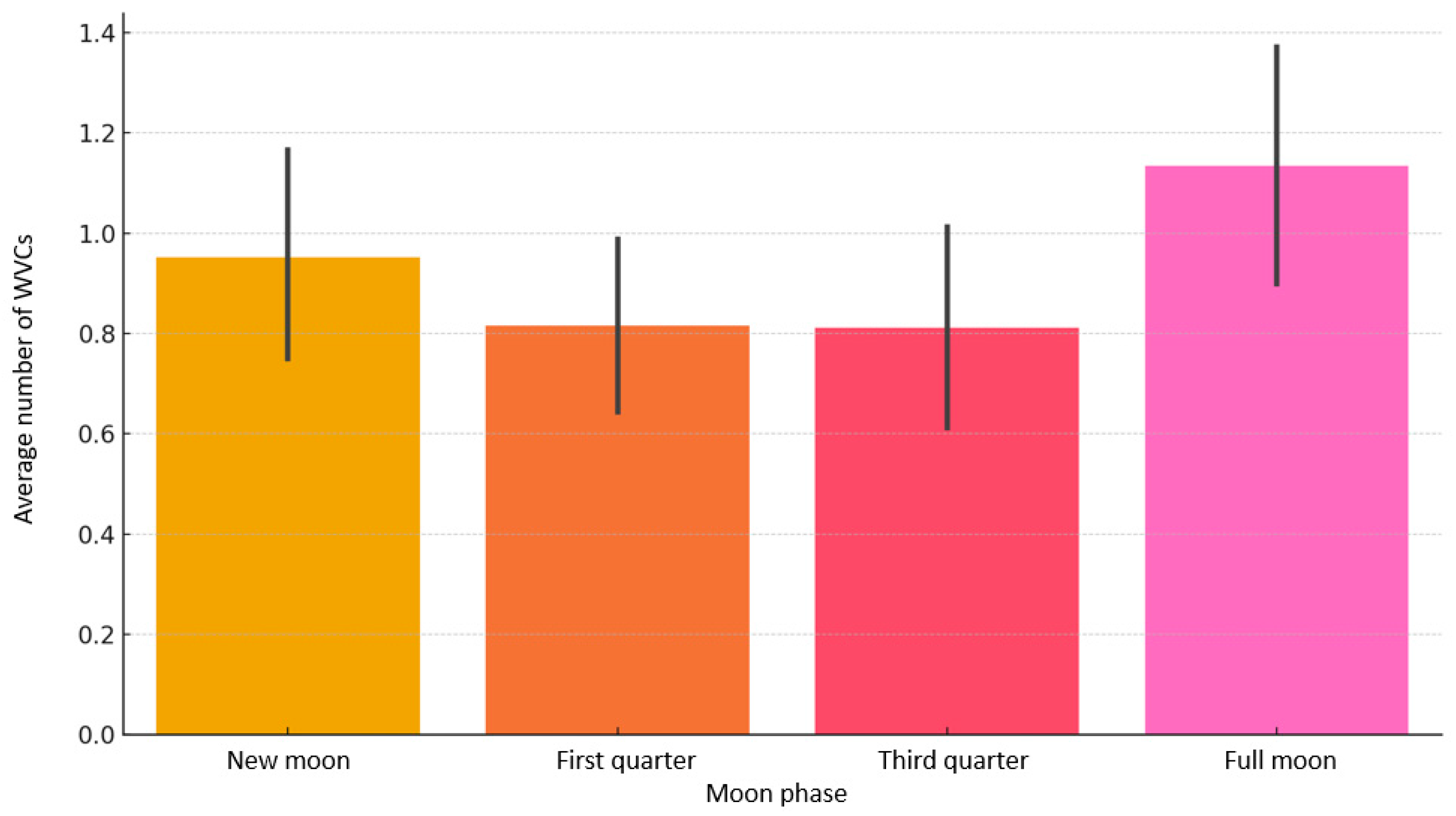
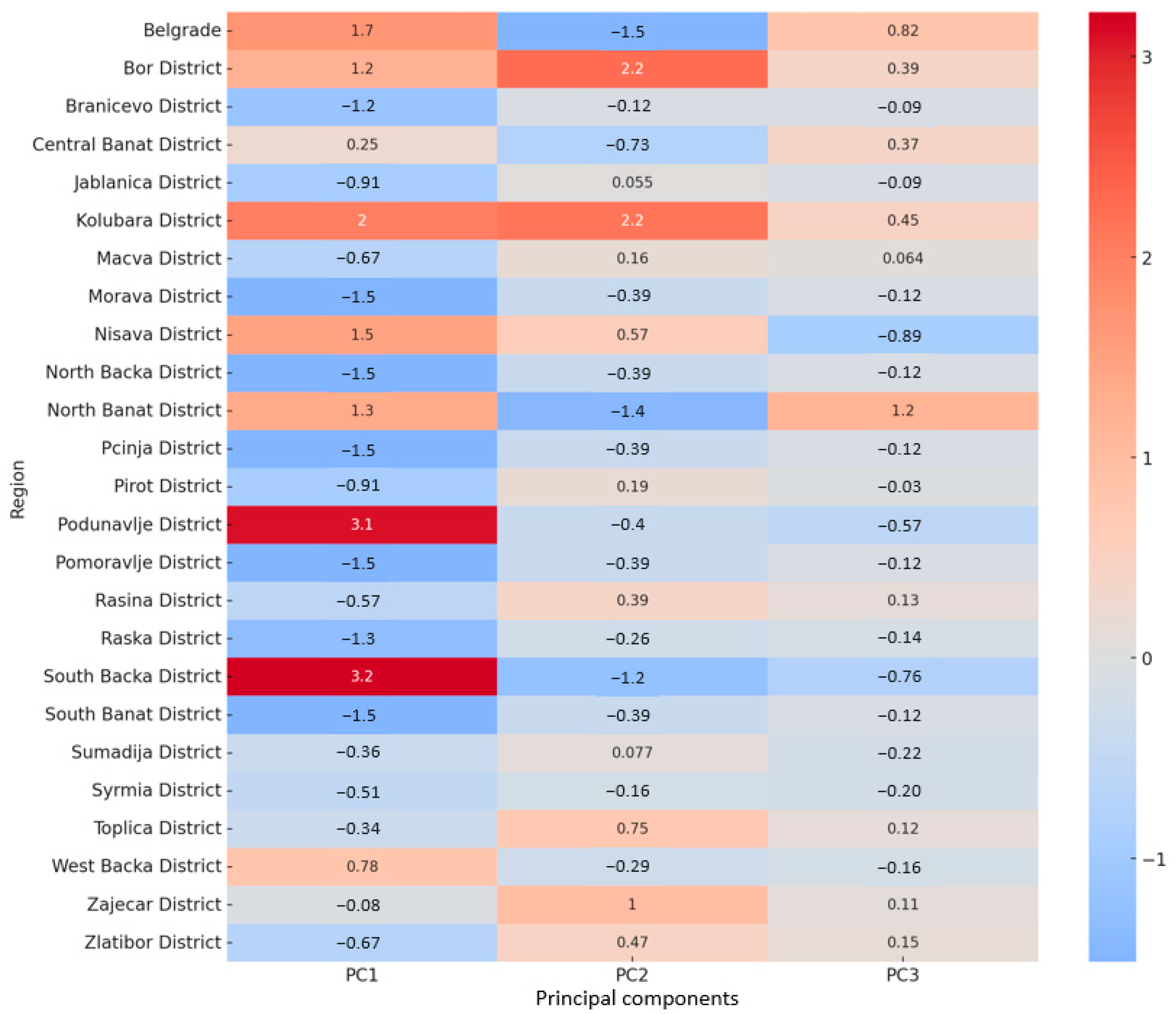
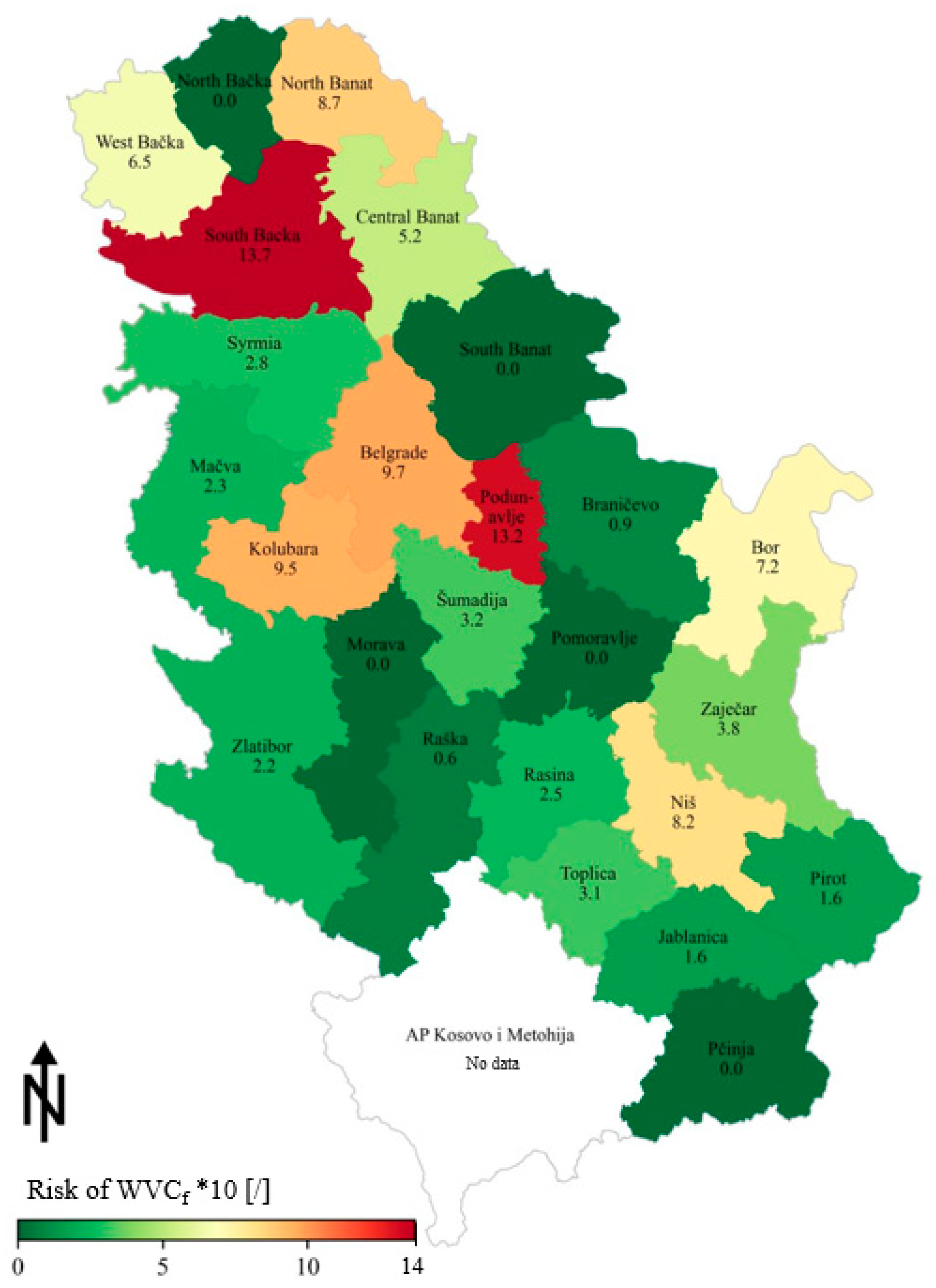
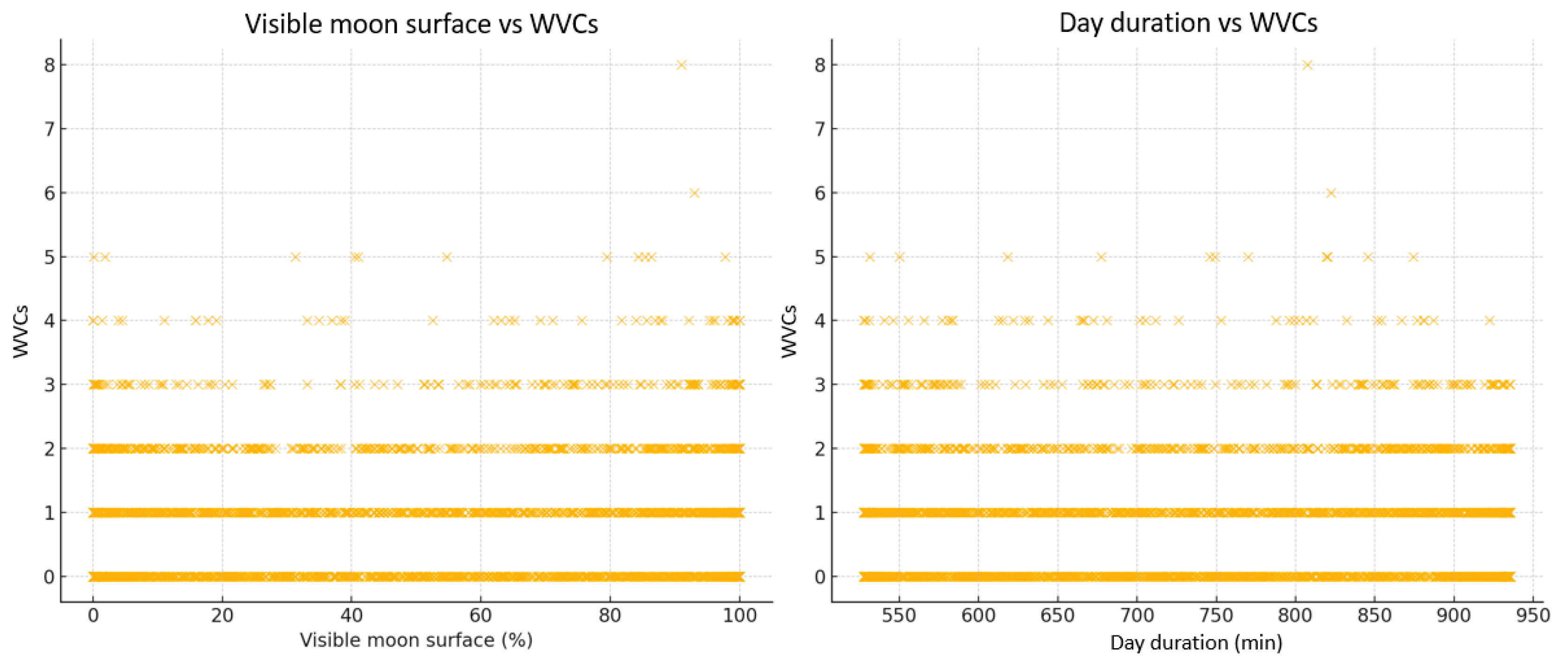
| 2016 | 2017 | 2018 | 2019 | 2021 | 2022 | 2023 | |
|---|---|---|---|---|---|---|---|
| New moon | 14 | 7 | 10 | 10 | 15 | 10 | 14 |
| First quarter | 7 | 11 | 6 | 14 | 13 | 11 | 9 |
| Third quarter | 10 | 9 | 8 | 6 | 16 | 13 | 7 |
| Full moon | 8 | 16 | 7 | 16 | 19 | 21 | 14 |
| 2016 | 2017 | 2018 | 2019 | 2021 | 2022 | 2023 | |
|---|---|---|---|---|---|---|---|
| WVCf | 0.667 | 1.231 | 0.538 | 1.231 | 1.583 | 1.615 | 1.077 |
| WVCrd | 0.543 | 0.626 | 0.684 | 0.964 | 1.038 | 0.976 | 0.906 |
Disclaimer/Publisher’s Note: The statements, opinions and data contained in all publications are solely those of the individual author(s) and contributor(s) and not of MDPI and/or the editor(s). MDPI and/or the editor(s) disclaim responsibility for any injury to people or property resulting from any ideas, methods, instructions or products referred to in the content. |
© 2025 by the authors. Licensee MDPI, Basel, Switzerland. This article is an open access article distributed under the terms and conditions of the Creative Commons Attribution (CC BY) license (https://creativecommons.org/licenses/by/4.0/).
Share and Cite
Jevremović, S.; Tubić, V.; Arnaut, F.; Kolarski, A.; Srećković, V.A. Moonlit Roads—Spatial and Temporal Patterns of Wildlife–Vehicle Collisions in Serbia. Sustainability 2025, 17, 6443. https://doi.org/10.3390/su17146443
Jevremović S, Tubić V, Arnaut F, Kolarski A, Srećković VA. Moonlit Roads—Spatial and Temporal Patterns of Wildlife–Vehicle Collisions in Serbia. Sustainability. 2025; 17(14):6443. https://doi.org/10.3390/su17146443
Chicago/Turabian StyleJevremović, Sreten, Vladan Tubić, Filip Arnaut, Aleksandra Kolarski, and Vladimir A. Srećković. 2025. "Moonlit Roads—Spatial and Temporal Patterns of Wildlife–Vehicle Collisions in Serbia" Sustainability 17, no. 14: 6443. https://doi.org/10.3390/su17146443
APA StyleJevremović, S., Tubić, V., Arnaut, F., Kolarski, A., & Srećković, V. A. (2025). Moonlit Roads—Spatial and Temporal Patterns of Wildlife–Vehicle Collisions in Serbia. Sustainability, 17(14), 6443. https://doi.org/10.3390/su17146443









